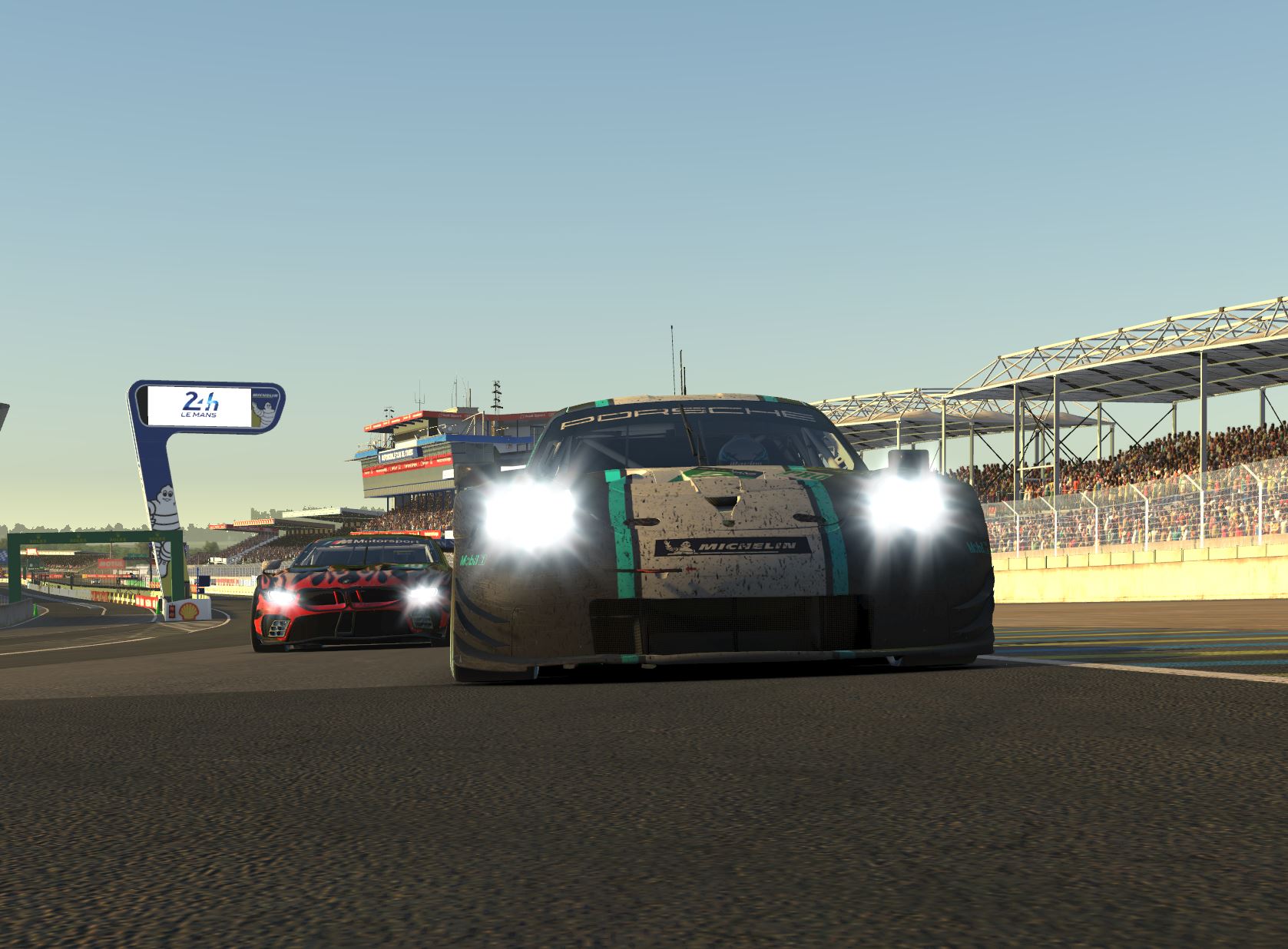It’s 6am, I’ve hardly slept, and the car behind me is not taking it easy. What’s worse, his car is ‘blinking’ because he has a bad connection, which is terrifying because you’re never totally sure where he’ll reappear.
It’s at this point I start to question the sanity of using up my whole weekend competing in the virtual version of the world’s most famous endurance race. So how did I end up here?
What is sim racing?
There’s much debate about the correct terminology within the community, but ‘sim racing’ is essentially a video game that tries to create the most realistic feeling of racing cars possible, hence being a ‘simulation’ rather than a ‘game’.
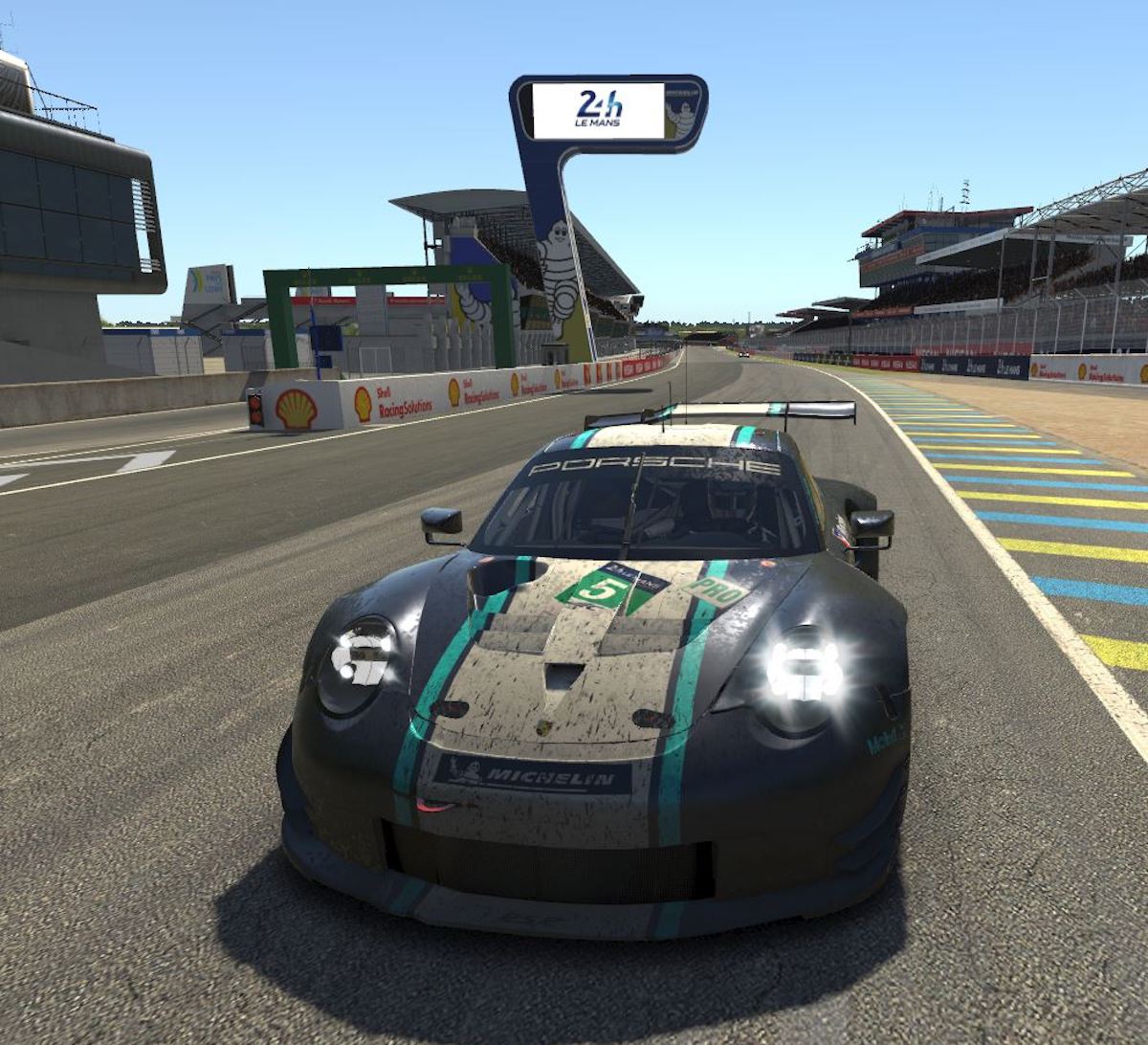
Whatever you call it, there’s no denying it’s a booming business that has seen a huge increase in participation during the Covid-19 pandemic. It’s been driven by real-life drivers turning to the virtual world to get their competitive fix, and real-world racing series such as Formula 1 creating virtual versions of their events.
As a long-time gaming fan, particularly racing games, I’ve long wanted to try iRacing, which is widely considered to be the most competitive sim racing software on the market. I signed up at the start of the pandemic and updated my gaming rig – a steering wheel and pedals that works in games for extra realism and control. I wasn’t alone, as iRacing saw its signup numbers shoot into the stratosphere.
Chaos at the start
Each year, iRacing holds various special one-off events, such as the 24 Hours of Le Mans. Given the huge increase in interest in iRacing, this year’s event drew massive signups – and the game’s servers simply couldn’t handle the thousands of teams and drivers logging in when registrations opened 30 minutes before the race started.
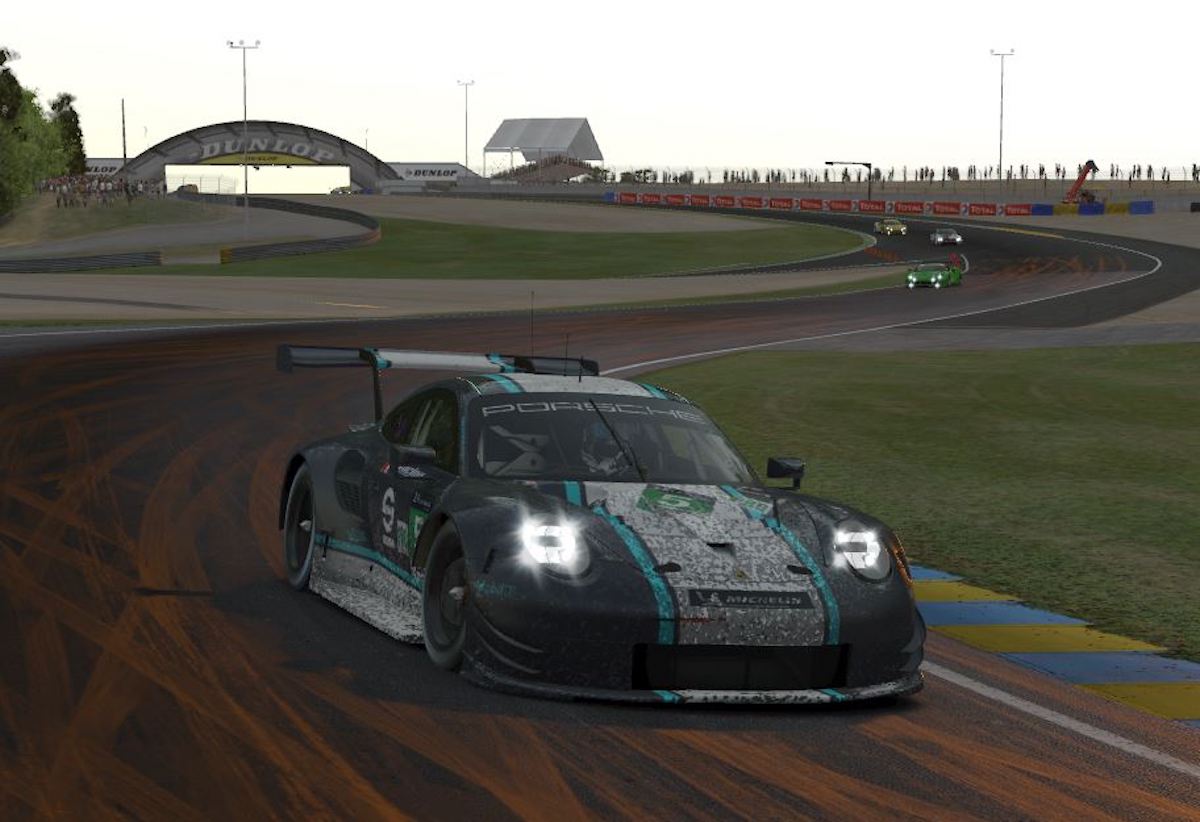
The result was hundreds of teams, including us, unable to join. Fortunately, the organisers hosted another race to start an hour later than planned to allow people to still compete. This didn’t make much difference to us, because we’re new and have a low rating, so we would only be put against other low ranking drivers. However, long-standing, higher ranked members were left angry, as it meant the ‘top split’ of drivers was broken up, meaning their ability to race against the best drivers in the game, including many famous real-world drivers, was taken away.
The actual competition
After the initial stress of trying to sign up, we joined the later race, due to start at 3pm BST. Usually, 24-hour races involve teams of four drivers taking about six hours each, but because we’re pretty new to this we only knew three people who could take part.
The first team member was me, a long-time gamer who hasn’t played much in the past few years so is still getting back to grips with it all and hoping I don’t let down my two more experienced colleagues. The second member was my good friend Jayson Fong, a leading automotive photographer from Australia who I’ve worked with ever since he moved to the UK about six years ago. And finally we had Joao Beato, another automotive photographer, though living and sim racing in Portugal.
While in the real world, the 24 Hours of Le Mans would take over drivers’ lives for the weeks leading up to it and they’d have no distractions on the weekend of the race, we had to work our scheduling around the fact I had to run errands on the Saturday afternoon and Joao had a real-life track day on the Sunday.

Joao took a steady pace during qualifying, putting us 30th of 54 entries, and after completing his first ‘double stint’, he’d managed to stay out of trouble to get us up to 15th. A stint is the time it takes to use a full tank of fuel, with drivers swapping during the pit stop.
Jayson and Joao shared driving duties all evening, and I put in a single stint at about 9.30pm before going to bed for a few hours. When my alarm went off at 3.30am, I was groggy. I had a shower to wake myself up and actually felt more tired afterwards. Coffee wasn’t helping either.
When I took over the wheel from a bleary-eyed Jayson, who’d volunteered to do the tough 1am to 4am slot, I was nervous. The guys had been lapping consistently and got us to 10th place, and a top 10 finish was looking on the cards – astonishing given our inexperience and lack of preparation.
And that’s when it happened. Just over two hours into my four-hour stint in the pitch black, with the car full of fuel, a car that had completed fewer laps than us was catching me. Our tactic had been to go slow and steady and avoid crashing, because the worst thing you can do in these races is get stuck in the pits doing repairs.
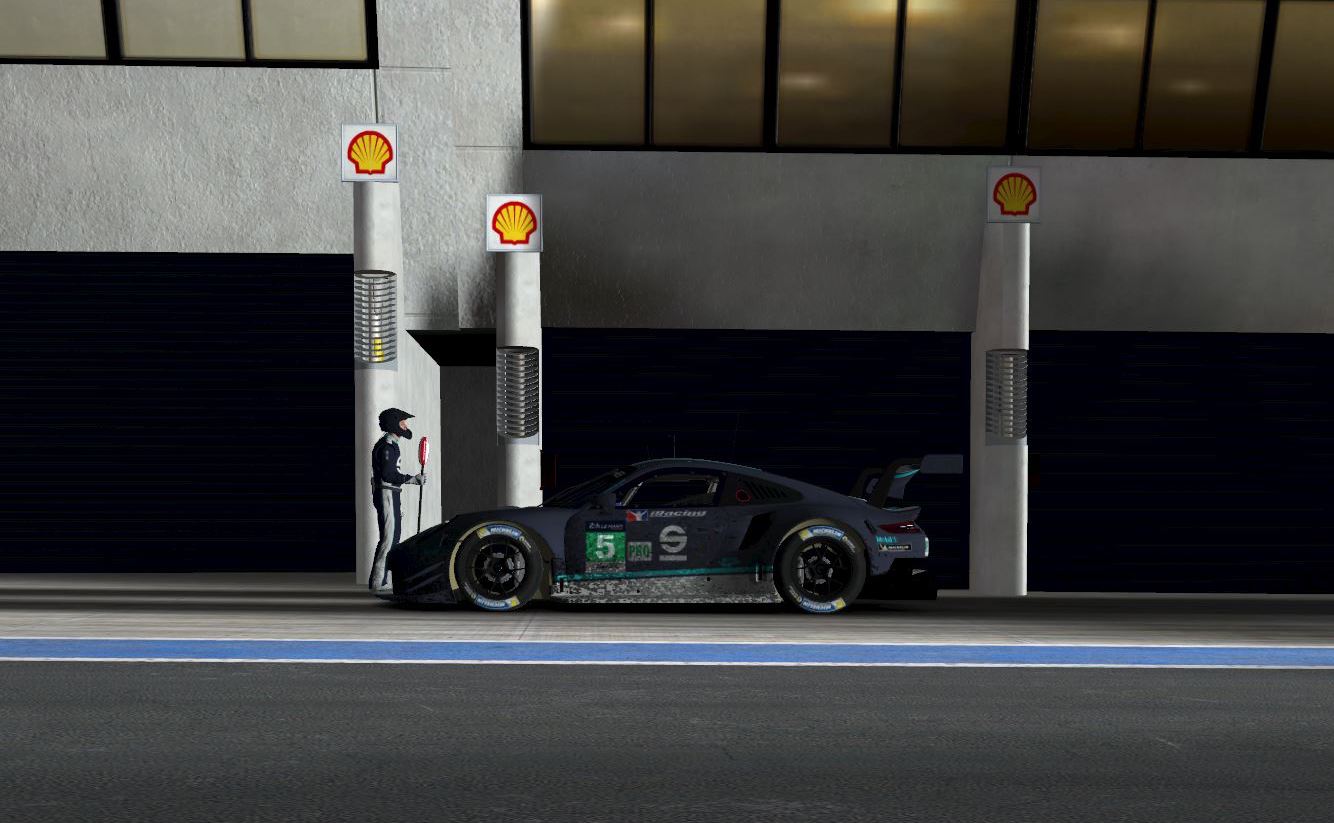
He was ‘blinking’ because his connection was bad and the game couldn’t always tell me where he was on the track. I had decided that when he got close enough to pass I would just move over, because it wasn’t worth the risk.
However, heading into the difficult right-hand kink heading into the Indianapolis corner, he disappeared behind me. His headlights that had been filling my mirror vanished, then as I turned in at high speed he appeared again – alongside me. I moved the wheel to avoid a collision and lost control, spinning into the tyre wall.
I was gutted, but with just 15 minutes of repairs it looked like we’d only lose three or four places. Our ninth position turned into 12th, so I headed back out onto the track to continue our slow and steady pace in the hope of regaining a top 10.
But just two laps later, it all went wrong. Coming out of the Tertre Rouge S early in the lap, the right hander goes over a small crest. It’s enough to unsettle the car as the rear goes light, but it’s not usually enough to cause a crash. We’d been lifting the throttle slightly during the race just to make sure.
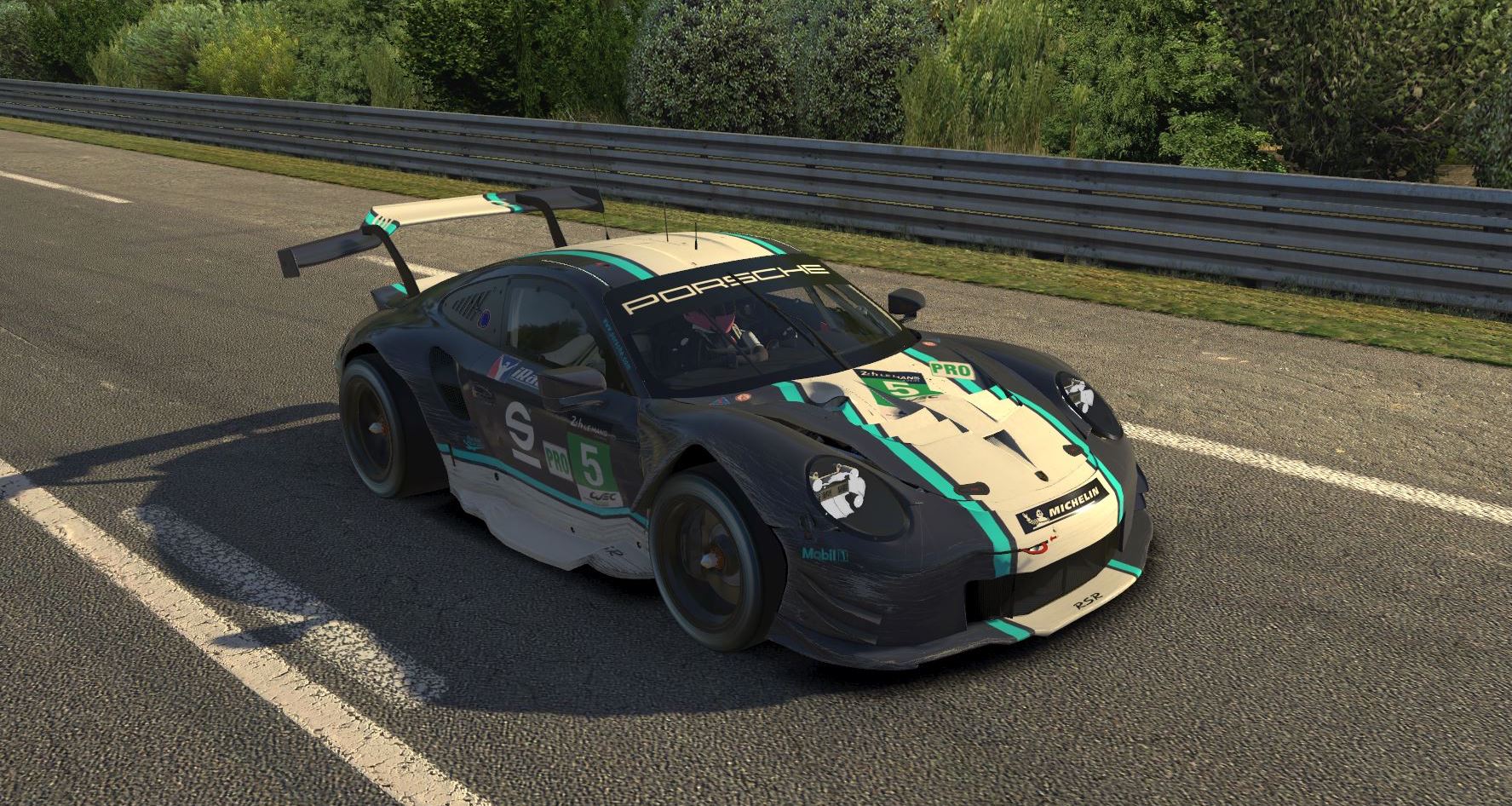
Inexplicably, whether due to residual damage, a touch too much throttle, or simply driver fatigue, the car span as I crested the corner. It was a crash I’d never done before, not in testing or practice races. I couldn’t keep it out of the wall and caused damage that would require about 30 minutes of repairs.
Not only was our shot at the top 10 gone, but we found ourselves in the high 20s. Jayson and I would battle on with a lightly damaged car for the remaining eight or nine hours, eventually finishing 25th after a splash and dash fuel strategy call that paid off and gained us two positions on the last lap. Our battered and bruised Porsche 911 RSR finished less than two seconds behind 24th after 24 hours of racing.
The verdict
It’s safe to say that the ending was bittersweet. This might be a virtual race with nothing on the line, but the sense of achievement was fantastic. We had fewer drivers than most teams, no experience, and two of us had never met. Yet we worked together, came up with strategy, supported each other when it went wrong, and got to the finish.
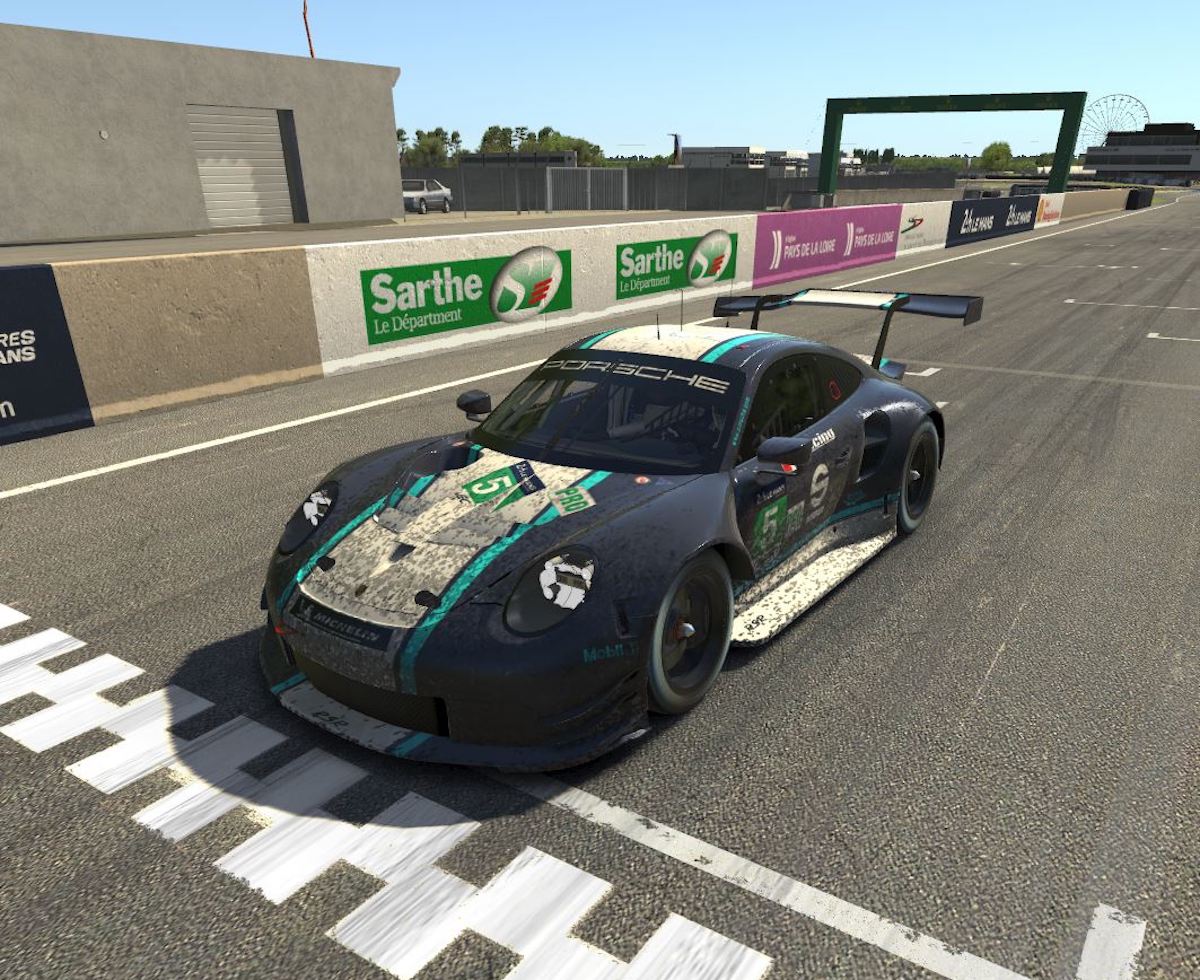
On a personal level I spent most of Sunday absolutely gutted. The first incident wasn’t my fault, but the second, more damaging one was. I watched the replay multiple times and I’m still not totally sure what I did differently to every other time, so we’ll just put it down as a learning experience.
What it did leave me with was an appreciation for the real thing. It’s a tiring, emotional rollercoaster, even when there’s no prize at the end of it. How those guys deal with the pressure and physical exertion of the real thing is admirable.
The next 24-hour race on iRacing is in July at Spa-Francorchamps. We’ll be there – hopefully this time we’ll have a fourth team member, a little more practice, and a little more luck!

